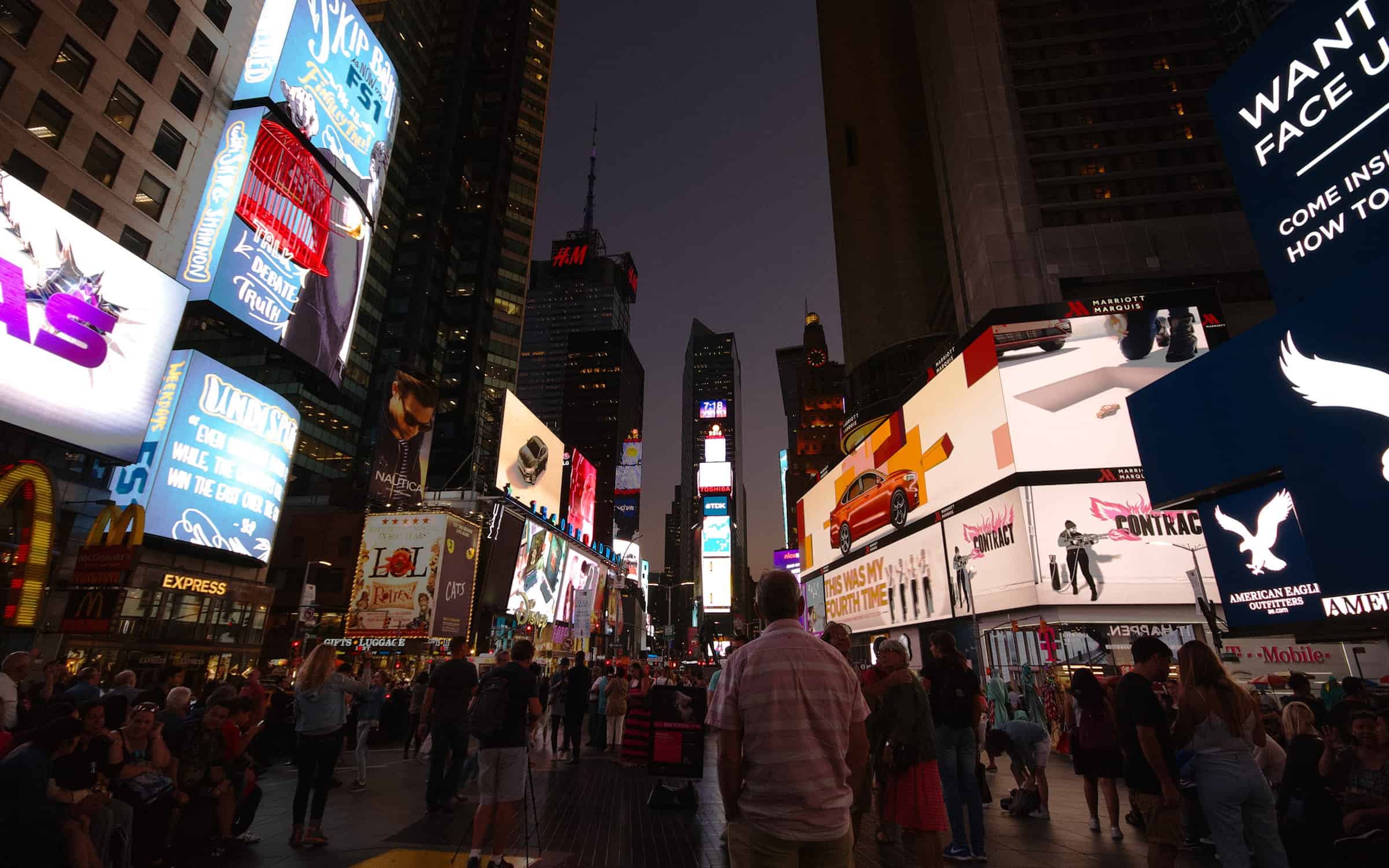What’s The Best Size For My Digital Signage Screen?
To maximise the message of your advertisement or presentation, it is important to consider the best size for your digital signage screens. In reality, there is no “one-size-fit-all” for digital signage screens; the content you display will be best optimised when you properly consider your audience and what you want to use the screen for. Thinking about readability, the amount of information on display and the location of your presentation all plays into how big the screen will need to be.
In this article, we will describe all these key factors in detail, helping you to make an informed decision about the best size for your digital signage screen applications. Let’s begin…

Location
Where your digital signage screens are placed will depend on the desired function of the displays. A smaller indoor poster or freestanding display would be more appropriate for any internal signage, such as location way finders or screens highlighting business memos. Larger indoor posters are perfect for corporate branding, for example, in the foyer or waiting room of your business space.
If you want your screen to be used for external advertisement purposes, somewhere with heavy foot traffic and increased visibility is essential. For an outdoor poster or exterior freestanding display, a pedestrian area of a busy town or city would be preferable. An outdoor display would need to be large enough that the messaging on screen would be easy to read, even at a glance. To attract the maximum attention with a single message alone, a bigger display would be better.
Travelling Speed
An obstacle facing signage is trying to make sure they are not simply ignored when people walk past them. A larger freestanding display screen for both indoor and outdoor advertising may be more suitable to divert potential customers attention. The sleek, tablet like design of the freestanding display screens make them an attractive distraction to anyone walking by.
However, if you want people to stop and interact with your digital signage, using a touch screen multimedia kiosk may be another option. A second alternative is using QR codes or social media hashtags in your digital signage screen display to try and encourage more interactivity.
Viewing Distance
The strength of a person’s eyesight obviously varies but taking viewing distance into consideration is imperative when choosing the best size for your digital signage screens. If you have a lot of content that needs to be shown on one slide, a larger screen would be the easiest way to achieve this.
Being economical with your messaging by making your slogans both easy-to-read and easy-to-remember is a fantastic way to make sure your content is retained by its intended audience.

Read Time
How much information do you need to display on digital signage screens? The amount of content used should dictate how big your screen needs to be. If your advertising campaign is indoors, or your information is very minimalist, you could afford to use a smaller indoor freestanding display screen.
On the other hand, using a large screen may create more of an impact when the text is viewed by passers-by. One of the benefits of using a digital signage screen for advertising is the ability to use video content, which can be looped or animated to display different messages one after the other.



